- Home
- H. G. Wells
The Stolen Bacillus and Other Incidents Page 14
The Stolen Bacillus and Other Incidents Read online
Page 14
A MOTH--GENUS NOVO
Probably you have heard of Hapley--not W.T. Hapley, the son, but thecelebrated Hapley, the Hapley of _Periplaneta Hapliia_, Hapley theentomologist. If so you know at least of the great feud between Hapleyand Professor Pawkins. Though certain of its consequences may benew to you. For those who have not, a word or two of explanation isnecessary, which the idle reader may go over with a glancing eye, ifhis indolence so incline him.
It is amazing how very widely diffused is the ignorance of such reallyimportant matters as this Hapley-Pawkins feud. Those epoch-makingcontroversies, again, that have convulsed the Geological Society, are,I verily believe, almost entirely unknown outside the fellowship ofthat body. I have heard men of fair general education even refer tothe great scenes at these meetings as vestry-meeting squabbles. Yetthe great Hate of the English and Scotch geologists has lasted nowhalf a century, and has "left deep and abundant marks upon the body ofthe science." And this Hapley-Pawkins business, though perhaps a morepersonal affair, stirred passions as profound, if not profounder. Yourcommon man has no conception of the zeal that animates a scientificinvestigator, the fury of contradiction you can arouse in him. It isthe _odium theologicum_ in a new form. There are men, for instance,who would gladly burn Professor Ray Lankester at Smithfield forhis treatment of the Mollusca in the Encyclopaedia. That fantasticextension of the Cephalopods to cover the Pteropods ... But I wanderfrom Hapley and Pawkins.
It began years and years ago, with a revision of the Microlepidoptera(whatever these may be) by Pawkins, in which he extinguished a newspecies created by Hapley. Hapley, who was always quarrelsome, repliedby a stinging impeachment of the entire classification of Pawkins[A].Pawkins, in his "Rejoinder[B]," suggested that Hapley's microscopewas as defective as his powers of observation, and called him an"irresponsible meddler"--Hapley was not a professor at that time.Hapley, in his retort[C], spoke of "blundering collectors," anddescribed, as if inadvertently, Pawkins' revision as a "miracle ofineptitude." It was war to the knife. However, it would scarcelyinterest the reader to detail how these two great men quarrelled, andhow the split between them widened until from the Microlepidopterathey were at war upon every open question in entomology. There werememorable occasions. At times the Royal Entomological Society meetingsresembled nothing so much as the Chamber of Deputies. On the whole, Ifancy Pawkins was nearer the truth than Hapley. But Hapley was skilfulwith his rhetoric, had a turn for ridicule rare in a scientific man,was endowed with vast energy, and had a fine sense of injury in thematter of the extinguished species; while Pawkins was a man of dullpresence, prosy of speech, in shape not unlike a water-barrel,over-conscientious with testimonials, and suspected of jobbing museumappointments. So the young men gathered round Hapley and applaudedhim. It was a long struggle, vicious from the beginning, and growingat last to pitiless antagonism. The successive turns of fortune, nowan advantage to one side and now to another--now Hapley tormented bysome success of Pawkins, and now Pawkins outshone by Hapley, belongrather to the history of entomology than to this story.
[Footnote A: "Remarks on a Recent Revision of Microlepidoptera."_Quart. Journ. Entomological Soc_. 1863.]
[Footnote B: "Rejoinder to certain Remarks," &c. _Ibid_. 1864.]
[Footnote C: "Further Remarks," &c. _Ibid_.]
But in 1891 Pawkins, whose health had been bad for some time,published some work upon the "mesoblast" of the Death's Head Moth.What the mesoblast of the Death's Head Moth may be, does not matter arap in this story. But the work was far below his usual standard, andgave Hapley an opening he had coveted for years. He must have workednight and day to make the most of his advantage.
In an elaborate critique he rent Pawkins to tatters--one can fancy theman's disordered black hair, and his queer dark eyes flashing ashe went for his antagonist--and Pawkins made a reply, halting,ineffectual, with painful gaps of silence, and yet malignant. Therewas no mistaking his will to wound Hapley, nor his incapacity todo it. But few of those who heard him--I was absent from thatmeeting--realised how ill the man was.
Hapley had got his opponent down, and meant to finish him. He followedwith a simply brutal attack upon Pawkins, in the form of a paper uponthe development of moths in general, a paper showing evidence of amost extraordinary amount of mental labour, and yet couched in aviolently controversial tone. Violent as it was, an editorial notewitnesses that it was modified. It must have covered Pawkins withshame and confusion of face. It left no loophole; it was murderous inargument, and utterly contemptuous in tone; an awful thing for thedeclining years of a man's career.
The world of entomologists waited breathlessly for the rejoinder fromPawkins. He would try one, for Pawkins had always been game. But whenit came it surprised them. For the rejoinder of Pawkins was to catchthe influenza, to proceed to pneumonia, and to die.
It was perhaps as effectual a reply as he could make under thecircumstances, and largely turned the current of feeling againstHapley. The very people who had most gleefully cheered on thosegladiators became serious at the consequence. There could be noreasonable doubt the fret of the defeat had contributed to the deathof Pawkins. There was a limit even to scientific controversy, saidserious people. Another crushing attack was already in the press andappeared on the day before the funeral. I don't think Hapley exertedhimself to stop it. People remembered how Hapley had hounded down hisrival, and forgot that rival's defects. Scathing satire reads ill overfresh mould. The thing provoked comment in the daily papers. This itwas that made me think that you had probably heard of Hapley and thiscontroversy. But, as I have already remarked, scientific workers livevery much in a world of their own; half the people, I dare say, who goalong Piccadilly to the Academy every year, could not tell you wherethe learned societies abide. Many even think that Research is a kindof happy-family cage in which all kinds of men lie down together inpeace.
In his private thoughts Hapley could not forgive Pawkins for dying.In the first place, it was a mean dodge to escape the absolutepulverisation Hapley had in hand for him, and in the second, it leftHapley's mind with a queer gap in it. For twenty years he had workedhard, sometimes far into the night, and seven days a week, withmicroscope, scalpel, collecting-net, and pen, and almost entirely withreference to Pawkins. The European reputation he had won had come asan incident in that great antipathy. He had gradually worked up to aclimax in this last controversy. It had killed Pawkins, but it hadalso thrown Hapley out of gear, so to speak, and his doctor advisedhim to give up work for a time, and rest. So Hapley went down into aquiet village in Kent, and thought day and night of Pawkins, and goodthings it was now impossible to say about him.
At last Hapley began to realise in what direction the pre-occupationtended. He determined to make a fight for it, and started by trying toread novels. But he could not get his mind off Pawkins, white in theface, and making his last speech--every sentence a beautiful openingfor Hapley. He turned to fiction--and found it had no grip on him.He read the "Island Nights' Entertainments" until his "sense ofcausation" was shocked beyond endurance by the Bottle Imp. Thenhe went to Kipling, and found he "proved nothing," besides beingirreverent and vulgar. These scientific people have their limitations.Then unhappily, he tried Besant's "Inner House," and the openingchapter set his mind upon learned societies and Pawkins at once.
So Hapley turned to chess, and found it a little more soothing. Hesoon mastered the moves and the chief gambits and commoner closingpositions, and began to beat the Vicar. But then the cylindricalcontours of the opposite king began to resemble Pawkins standing upand gasping ineffectually against Check-mate, and Hapley decided togive up chess.
Perhaps the study of some new branch of science would after all bebetter diversion. The best rest is change of occupation. Hapleydetermined to plunge at diatoms, and had one of his smallermicroscopes and Halibut's monograph sent down from London. He thoughtthat perhaps if he could get up a vigorous quarrel with Halibut, hemight be able to begin life afresh and forget Pawkins. And very soonhe was hard at work, in
his habitual strenuous fashion, at thesemicroscopic denizens of the way-side pool.
It was on the third day of the diatoms that Hapley became aware ofa novel addition to the local fauna. He was working late at themicroscope, and the only light in the room was the brilliant littlelamp with the special form of green shade. Like all experiencedmicroscopists, he kept both eyes open. It is the only way to avoidexcessive fatigue. One eye was over the instrument, and bright anddistinct before that was the circular field of the microscope, acrosswhich a brown diatom was slowly moving. With the other eye Hapley saw,as it were, without seeing[A]. He was only dimly conscious of thebrass side of the instrument, the illuminated part of the table-cloth,a sheet of note-paper, the foot of the lamp, and the darkened roombeyond.
[Footnote A: The reader unaccustomed to microscopes may easilyunderstand this by rolling a newspaper in the form of a tube andlooking through it at a book, keeping the other eye open.]
Suddenly his attention drifted from one eye to the other. Thetable-cloth was of the material called tapestry by shopmen, and ratherbrightly coloured. The pattern was in gold, with a small amount ofcrimson and pale blue upon a greyish ground. At one point the patternseemed displaced, and there was a vibrating movement of the colours atthis point.
Hapley suddenly moved his head back and looked with both eyes. Hismouth fell open with astonishment.
It was a large moth or butterfly; its wings spread in butterflyfashion!
It was strange it should be in the room at all, for the windows wereclosed. Strange that it should not have attracted his attention whenfluttering to its present position. Strange that it should match thetable-cloth. Stranger far that to him, Hapley, the great entomologist,it was altogether unknown. There was no delusion. It was crawlingslowly towards the foot of the lamp.
"_Genus novo_, by heavens! And in England!" said Hapley, staring.
Then he suddenly thought of Pawkins. Nothing would have maddenedPawkins more.... And Pawkins was dead!
Something about the head and body of the insect became singularlysuggestive of Pawkins, just as the chess king had been.
"Confound Pawkins!" said Hapley. "But I must catch this." And, lookinground him for some means of capturing the moth, he rose slowly outof his chair. Suddenly the insect rose, struck the edge of thelampshade--Hapley heard the "ping"--and vanished into the shadow.
In a moment Hapley had whipped off the shade, so that the whole roomwas illuminated. The thing had disappeared, but soon his practised eyedetected it upon the wall paper near the door. He went towards it,poising the lamp-shade for capture. Before he was within strikingdistance, however, it had risen and was fluttering round the room.After the fashion of its kind, it flew with sudden starts and turns,seeming to vanish here and reappear there. Once Hapley struck, andmissed; then again.
The third time he hit his microscope. The instrument swayed, struckand overturned the lamp, and fell noisily upon the floor. The lampturned over on the table and, very luckily, went out. Hapley was leftin the dark. With a start he felt the strange moth blunder into hisface.
It was maddening. He had no lights. If he opened the door of theroom the thing would get away. In the darkness he saw Pawkins quitedistinctly laughing at him. Pawkins had ever an oily laugh. He sworefuriously and stamped his foot on the floor.
There was a timid rapping at the door.
Then it opened, perhaps a foot, and very slowly. The alarmed face ofthe landlady appeared behind a pink candle flame; she wore a night-capover her grey hair and had some purple garment over her shoulders."What _was_ that fearful smash?" she said. "Has anything--" Thestrange moth appeared fluttering about the chink of the door. "Shutthat door!" said Hapley, and suddenly rushed at her.
The door slammed hastily. Hapley was left alone in the dark. Then inthe pause he heard his landlady scuttle upstairs, lock her door anddrag something heavy across the room and put against it.
It became evident to Hapley that his conduct and appearance had beenstrange and alarming. Confound the moth! and Pawkins! However, it wasa pity to lose the moth now. He felt his way into the hall and foundthe matches, after sending his hat down upon the floor with a noiselike a drum. With the lighted candle he returned to the sitting-room.No moth was to be seen. Yet once for a moment it seemed that the thingwas fluttering round his head. Hapley very suddenly decided to give upthe moth and go to bed. But he was excited. All night long his sleepwas broken by dreams of the moth, Pawkins, and his landlady. Twice inthe night he turned out and soused his head in cold water.
One thing was very clear to him. His landlady could not possiblyunderstand about the strange moth, especially as he had failed tocatch it. No one but an entomologist would understand quite how hefelt. She was probably frightened at his behaviour, and yet he failedto see how he could explain it. He decided to say nothing furtherabout the events of last night. After breakfast he saw her in hergarden, and decided to go out to talk to her to reassure her. Hetalked to her about beans and potatoes, bees, caterpillars, and theprice of fruit. She replied in her usual manner, but she looked at hima little suspiciously, and kept walking as he walked, so that therewas always a bed of flowers, or a row of beans, or something ofthe sort, between them. After a while he began to feel singularlyirritated at this, and to conceal his vexation went indoors andpresently went out for a walk.
The moth, or butterfly, trailing an odd flavour of Pawkins with it,kept coming into that walk, though he did his best to keep his mindoff it. Once he saw it quite distinctly, with its wings flattened out,upon the old stone wall that runs along the west edge of the park,but going up to it he found it was only two lumps of grey and yellowlichen. "This," said Hapley, "is the reverse of mimicry. Instead ofa butterfly looking like a stone, here is a stone looking like abutterfly!" Once something hovered and fluttered round his head, butby an effort of will he drove that impression out of his mind again.
In the afternoon Hapley called upon the Vicar, and argued with himupon theological questions. They sat in the little arbour covered withbriar, and smoked as they wrangled. "Look at that moth!" said Hapley,suddenly, pointing to the edge of the wooden table.
"Where?" said the Vicar.
"You don't see a moth on the edge of the table there?" said Hapley.
"Certainly not," said the Vicar.
Hapley was thunderstruck. He gasped. The Vicar was staring at him.Clearly the man saw nothing. "The eye of faith is no better than theeye of science," said Hapley, awkwardly.
"I don't see your point," said the Vicar, thinking it was part of theargument.
That night Hapley found the moth crawling over his counterpane. He saton the edge of the bed in his shirt-sleeves and reasoned with himself.Was it pure hallucination? He knew he was slipping, and he battledfor his sanity with the same silent energy he had formerly displayedagainst Pawkins. So persistent is mental habit, that he felt as if itwere still a struggle with Pawkins. He was well versed in psychology.He knew that such visual illusions do come as a result of mentalstrain. But the point was, he did not only _see_ the moth, he hadheard it when it touched the edge of the lampshade, and afterwardswhen it hit against the wall, and he had felt it strike his face inthe dark.
He looked at it. It was not at all dreamlike, but perfectly clear andsolid-looking in the candle-light. He saw the hairy body, and theshort feathery antennae, the jointed legs, even a place where the downwas rubbed from the wing. He suddenly felt angry with himself forbeing afraid of a little insect.
His landlady had got the servant to sleep with her that night, becauseshe was afraid to be alone. In addition she had locked the door, andput the chest of drawers against it. They listened and talked inwhispers after they had gone to bed, but nothing occurred to alarmthem. About eleven they had ventured to put the candle out, and hadboth dozed off to sleep. They woke up with a start, and sat up in bed,listening in the darkness.
Then they heard slippered feet going to and fro in Hapley's room. Achair was overturned, and there was a violent dab at the wall. Then achina
mantel ornament smashed upon the fender. Suddenly the door ofthe room opened, and they heard him upon the landing. They clung toone another, listening. He seemed to be dancing upon the staircase.Now he would go down three or four steps quickly, then up again, thenhurry down into the hall. They heard the umbrella stand go over, andthe fanlight break. Then the bolt shot and the chain rattled. He wasopening the door.
They hurried to the window. It was a dim grey night; an almostunbroken sheet of watery cloud was sweeping across the moon, and thehedge and trees in front of the house were black against the paleroadway. They saw Hapley, looking like a ghost in his shirt and whitetrousers, running to and fro in the road, and beating the air. Now hewould stop, now he would dart very rapidly at something invisible, nowhe would move upon it with stealthy strides. At last he went out ofsight up the road towards the down. Then, while they argued who shouldgo down and lock the door, he returned. He was walking very fast, andhe came straight into the house, closed the door carefully, and wentquietly up to his bedroom. Then everything was silent.
"Mrs Colville," said Hapley, calling down the staircase next morning."I hope I did not alarm you last night."
"You may well ask that!" said Mrs Colville.
"The fact is, I am a sleep-walker, and the last two nights I have beenwithout my sleeping mixture. There is nothing to be alarmed about,really. I am sorry I made such an ass of myself. I will go over thedown to Shoreham, and get some stuff to make me sleep soundly. I oughtto have done that yesterday."
But half-way over the down, by the chalk pits, the moth came uponHapley again. He went on, trying to keep his mind upon chess problems,but it was no good. The thing fluttered into his face, and he struckat it with his hat in self-defence. Then rage, the old rage--the ragehe had so often felt against Pawkins--came upon him again. He wenton, leaping and striking at the eddying insect. Suddenly he trod onnothing, and fell headlong.
There was a gap in his sensations, and Hapley found himself sitting onthe heap of flints in front of the opening of the chalkpits, with aleg twisted back under him. The strange moth was still flutteringround his head. He struck at it with his hand, and turning his headsaw two men approaching him. One was the village doctor. It occurredto Hapley that this was lucky. Then it came into his mind, withextraordinary vividness, that no one would ever be able to see thestrange moth except himself, and that it behoved him to keep silentabout it.
Late that night, however, after his broken leg was set, he wasfeverish and forgot his self-restraint. He was lying flat on his bed,and he began to run his eyes round the room to see if the moth wasstill about. He tried not to do this, but it was no good. Hesoon caught sight of the thing resting close to his hand, by thenight-light, on the green table-cloth. The wings quivered. With asudden wave of anger he smote at it with his fist, and the nurse wokeup with a shriek. He had missed it.
"That moth!" he said; and then, "It was fancy. Nothing!"
All the time he could see quite clearly the insect going round thecornice and darting across the room, and he could also see that thenurse saw nothing of it and looked at him strangely. He must keephimself in hand. He knew he was a lost man if he did not keep himselfin hand. But as the night waned the fever grew upon him, and the verydread he had of seeing the moth made him see it. About five, just asthe dawn was grey, he tried to get out of bed and catch it, though hisleg was afire with pain. The nurse had to struggle with him.
On account of this, they tied him down to the bed. At this the mothgrew bolder, and once he felt it settle in his hair. Then, because hestruck out violently with his arms, they tied these also. At this themoth came and crawled over his face, and Hapley wept, swore, screamed,prayed for them to take it off him, unavailingly.
The doctor was a blockhead, a half-qualified general practitioner, andquite ignorant of mental science. He simply said there was no moth.Had he possessed the wit, he might still, perhaps, have saved Hapleyfrom his fate by entering into his delusion and covering his face withgauze, as he prayed might be done. But, as I say, the doctor was ablockhead, and until the leg was healed Hapley was kept tied to hisbed, and with the imaginary moth crawling over him. It never left himwhile he was awake and it grew to a monster in his dreams. While hewas awake he longed for sleep, and from sleep he awoke screaming.
So now Hapley is spending the remainder of his days in a padded room,worried by a moth that no one else can see. The asylum doctor callsit hallucination; but Hapley, when he is in his easier mood, and cantalk, says it is the ghost of Pawkins, and consequently a uniquespecimen and well worth the trouble of catching.

 Ann Veronica: A Modern Love Story
Ann Veronica: A Modern Love Story The Time Machine
The Time Machine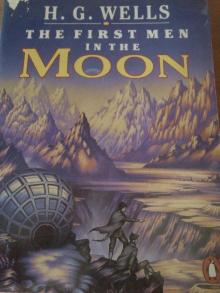 The First Men in the Moon
The First Men in the Moon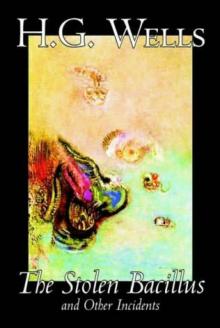 The Stolen Bacillus and Other Incidents
The Stolen Bacillus and Other Incidents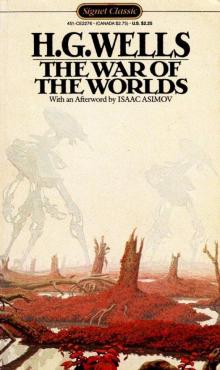 The War of the Worlds
The War of the Worlds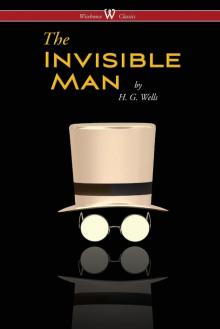 The Invisible Man: A Grotesque Romance
The Invisible Man: A Grotesque Romance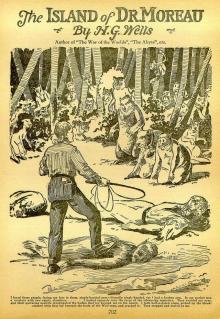 The Island of Doctor Moreau
The Island of Doctor Moreau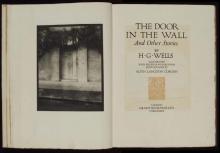 The Door in the Wall, and Other Stories
The Door in the Wall, and Other Stories The Best Science Fiction Stories of H G Wells
The Best Science Fiction Stories of H G Wells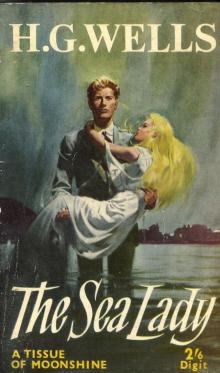 The Sea Lady
The Sea Lady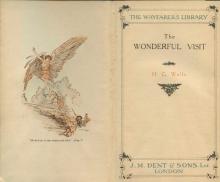 The Wonderful Visit
The Wonderful Visit Love and Mr. Lewisham
Love and Mr. Lewisham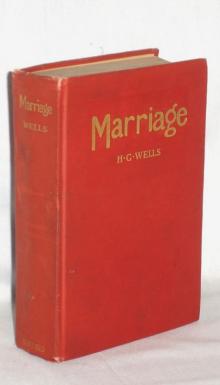 Marriage
Marriage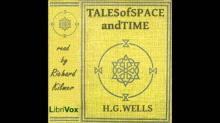 Tales of Space and Time
Tales of Space and Time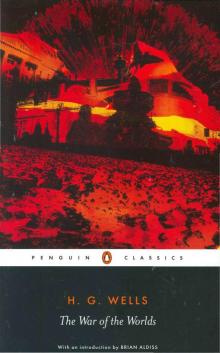 The War of the Worlds (Penguin Classics)
The War of the Worlds (Penguin Classics) Twelve Stories and a Dream
Twelve Stories and a Dream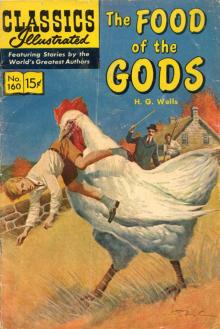 The Food of the Gods and How It Came to Earth
The Food of the Gods and How It Came to Earth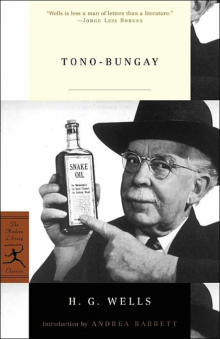 Tono-Bungay
Tono-Bungay The War in the Air
The War in the Air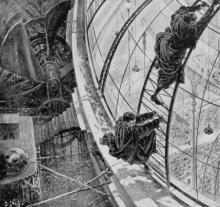 The Sleeper Awakes
The Sleeper Awakes The Country of the Blind and Other Stories
The Country of the Blind and Other Stories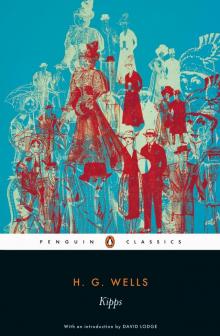 Kipps
Kipps The World Set Free
The World Set Free The Country of the Blind and other Selected Stories
The Country of the Blind and other Selected Stories Ann Veronica
Ann Veronica Ann Veronica a Modern Love Story
Ann Veronica a Modern Love Story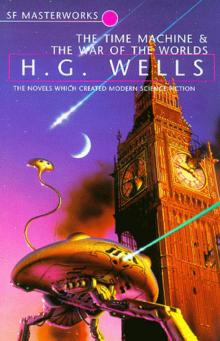 The Time Machine and The War of the Worlds
The Time Machine and The War of the Worlds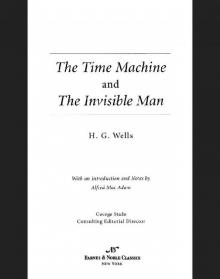 Time Machine and The Invisible Man (Barnes & Noble Classics Series)
Time Machine and The Invisible Man (Barnes & Noble Classics Series)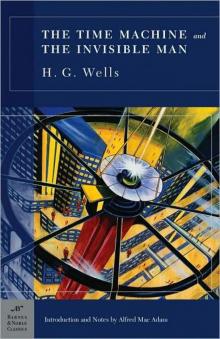 The Time Machine and The Invisible Man
The Time Machine and The Invisible Man The Island of Dr. Moreau
The Island of Dr. Moreau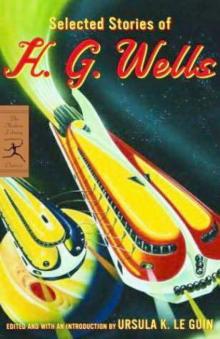 Selected Stories of H. G. Wells
Selected Stories of H. G. Wells Island of Dr. Moreau
Island of Dr. Moreau THE NEW MACHIAVELLI
THE NEW MACHIAVELLI